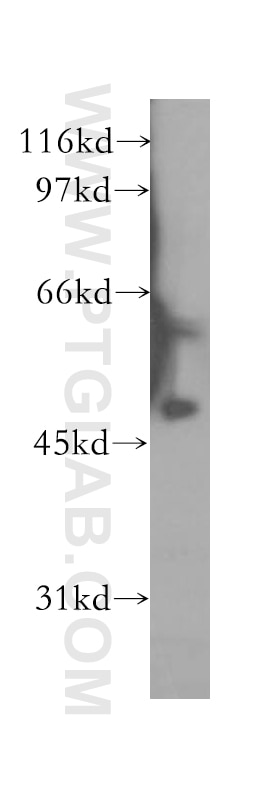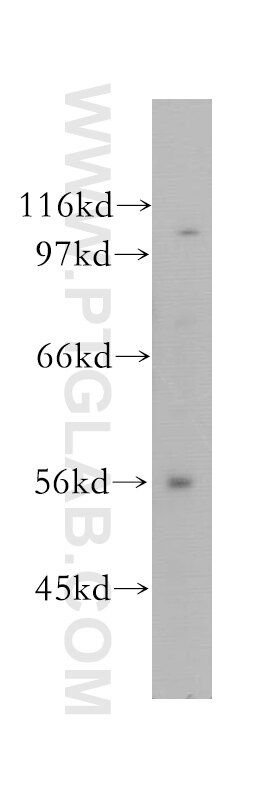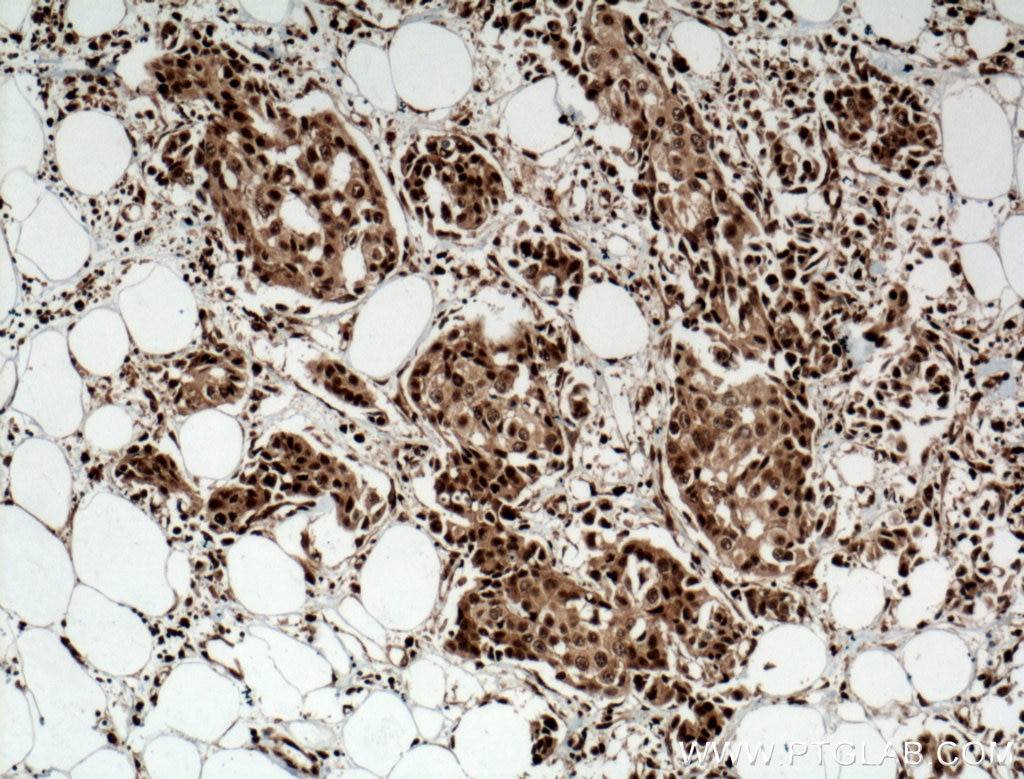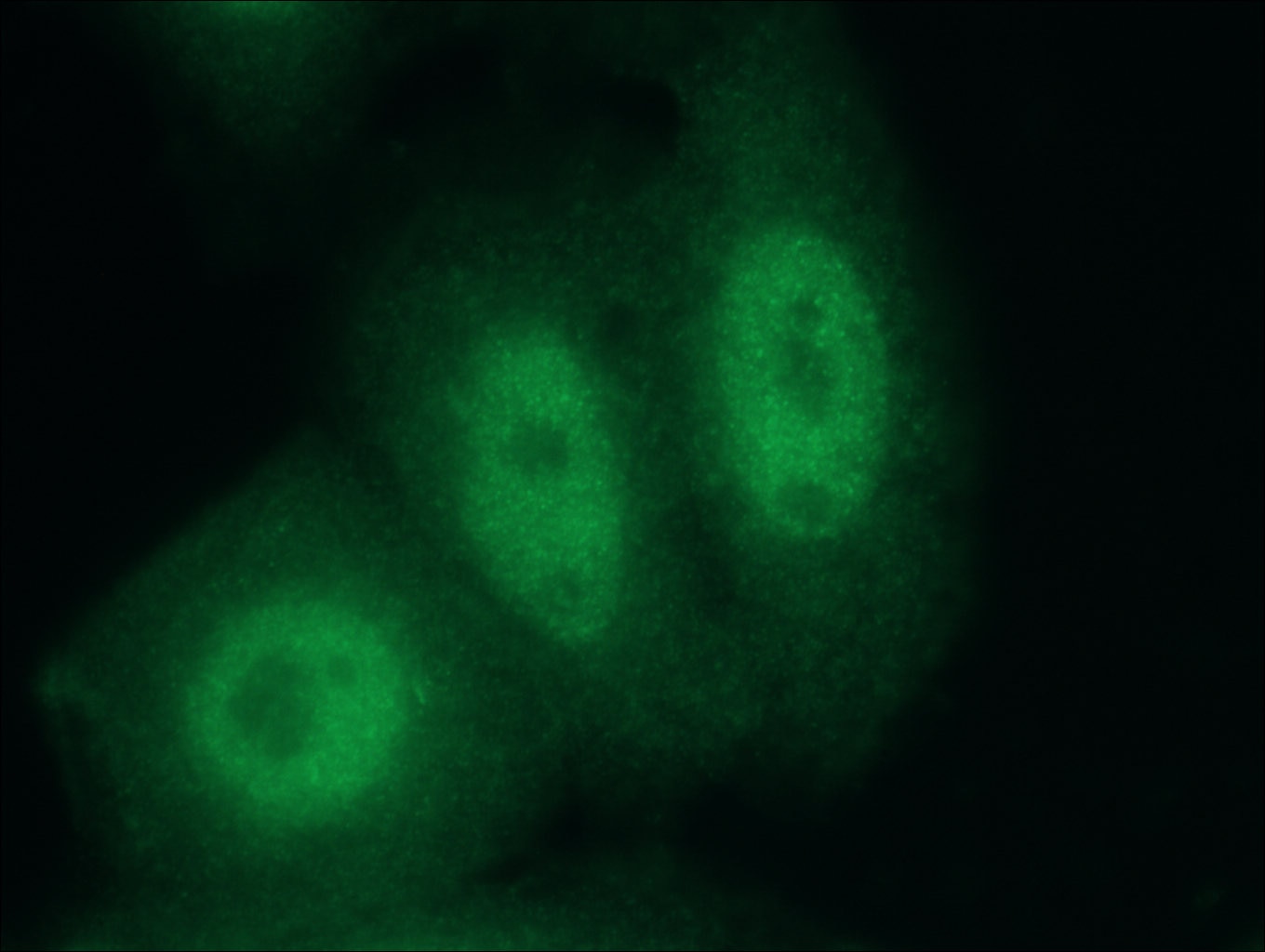Anticorps Polyclonal de lapin anti-CUGBP2
CUGBP2 Polyclonal Antibody for WB, IHC, IF/ICC, IP, ELISA
Hôte / Isotype
Lapin / IgG
Réactivité testée
Humain, souris
Applications
WB, IHC, IF/ICC, IP, ELISA
Conjugaison
Non conjugué
N° de cat : 12921-1-AP
Synonymes
Galerie de données de validation
Applications testées
| Résultats positifs en WB | cellules HeLa, cellules K-562, cellules MCF-7, tissu de thymus de souris |
| Résultats positifs en IP | tissu de muscle squelettique de souris |
| Résultats positifs en IHC | tissu de cancer du sein humain, il est suggéré de démasquer l'antigène avec un tampon de TE buffer pH 9.0; (*) À défaut, 'le démasquage de l'antigène peut être 'effectué avec un tampon citrate pH 6,0. |
| Résultats positifs en IF/ICC | cellules HepG2, |
Dilution recommandée
| Application | Dilution |
|---|---|
| Western Blot (WB) | WB : 1:500-1:2000 |
| Immunoprécipitation (IP) | IP : 0.5-4.0 ug for 1.0-3.0 mg of total protein lysate |
| Immunohistochimie (IHC) | IHC : 1:50-1:500 |
| Immunofluorescence (IF)/ICC | IF/ICC : 1:50-1:500 |
| It is recommended that this reagent should be titrated in each testing system to obtain optimal results. | |
| Sample-dependent, check data in validation data gallery | |
Applications publiées
| WB | See 3 publications below |
| IHC | See 1 publications below |
| IF | See 2 publications below |
Informations sur le produit
12921-1-AP cible CUGBP2 dans les applications de WB, IHC, IF/ICC, IP, ELISA et montre une réactivité avec des échantillons Humain, souris
| Réactivité | Humain, souris |
| Réactivité citée | Humain, souris |
| Hôte / Isotype | Lapin / IgG |
| Clonalité | Polyclonal |
| Type | Anticorps |
| Immunogène | CUGBP2 Protéine recombinante Ag3594 |
| Nom complet | CUG triplet repeat, RNA binding protein 2 |
| Masse moléculaire calculée | 56 kDa |
| Poids moléculaire observé | 50 kDa |
| Numéro d’acquisition GenBank | BC036391 |
| Symbole du gène | CUGBP2 |
| Identification du gène (NCBI) | 10659 |
| Conjugaison | Non conjugué |
| Forme | Liquide |
| Méthode de purification | Purification par affinité contre l'antigène |
| Tampon de stockage | PBS with 0.02% sodium azide and 50% glycerol |
| Conditions de stockage | Stocker à -20°C. Stable pendant un an après l'expédition. L'aliquotage n'est pas nécessaire pour le stockage à -20oC Les 20ul contiennent 0,1% de BSA. |
Informations générales
The CELF (CUGBP and ETR-3 Like Factor)/Bruno-like protein family plays important roles in the regulation of alternative splicing and translation. CUGBP2 is a member of this family of proteins that possesses several alternatively spliced exons. CUGBP2 induces smooth muscle-specific exon inclusion via binding to uridine purine repeat elements (URE) in ACTN1. Although CUGBP2 is known as a splicing activator for the N-methyl-D-aspartate receptor 1 (NMDA R1) exon 21, CUGBP2 represses NMDA R1 exon 5 inclusion. In addition, CUGBP2 was reported to repress the inclusion of the Ir exon 11.
Protocole
| Product Specific Protocols | |
|---|---|
| WB protocol for CUGBP2 antibody 12921-1-AP | Download protocol |
| IHC protocol for CUGBP2 antibody 12921-1-AP | Download protocol |
| IF protocol for CUGBP2 antibody 12921-1-AP | Download protocol |
| IP protocol for CUGBP2 antibody 12921-1-AP | Download protocol |
| Standard Protocols | |
|---|---|
| Click here to view our Standard Protocols |
Publications
| Species | Application | Title |
|---|---|---|
Oncotarget Inhibition of COX2 enhances the chemosensitivity of dichloroacetate in cervical cancer cells. | ||
Brain Res Transcriptional induction and translational inhibition of Arc and Cugbp2 in mice hippocampus after transient global ischemia under normothermic condition. | ||
Exp Biol Med (Maywood) Hypoxic colorectal cancer-secreted exosomes deliver miR-210-3p to normoxic tumor cells to elicit a protumoral effect. | ||
Pharmacol Res Exosomal miR-625-3p secreted by cancer-associated fibroblasts in colorectal cancer promotes EMT and chemotherapeutic resistance by blocking the CELF2/WWOX pathway | ||
bioRxiv LINC01432 binds to CELF2 in newly diagnosed multiple myeloma promoting short progression-free survival to standard therapy |








